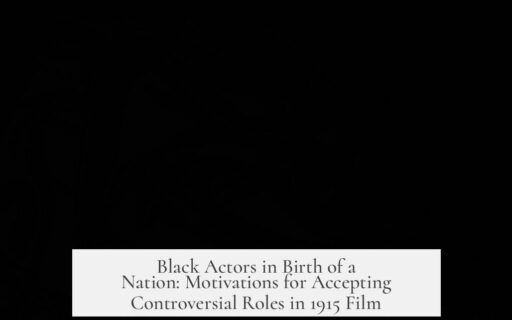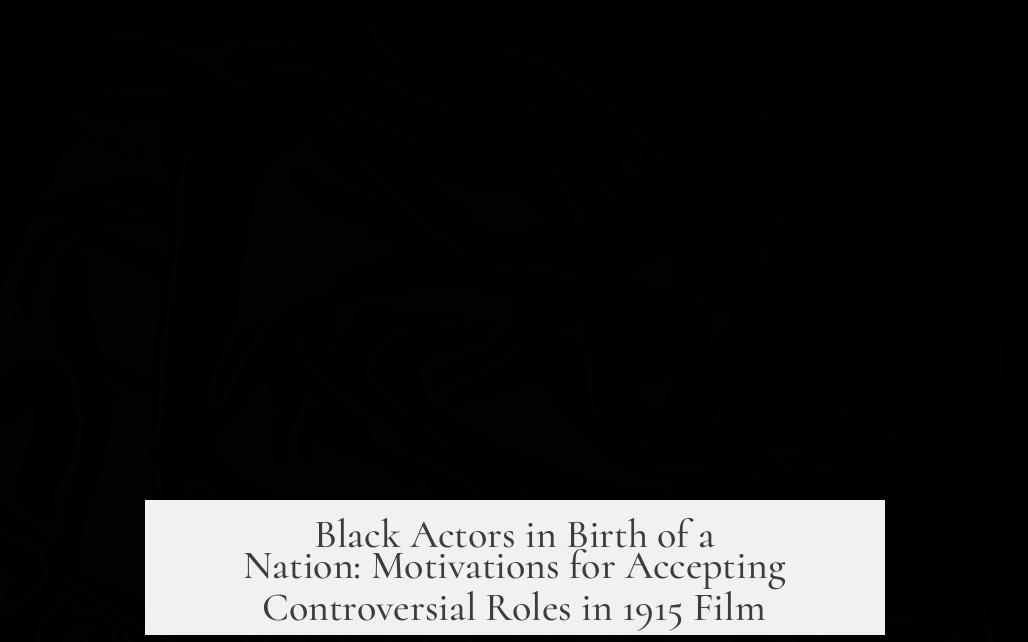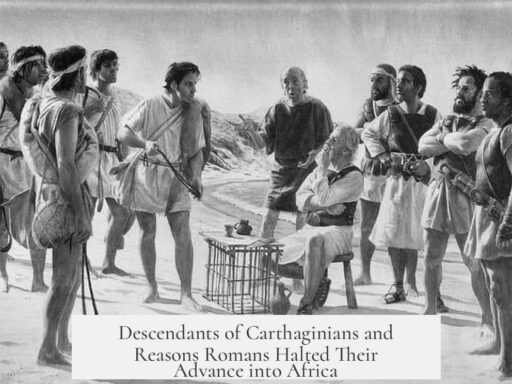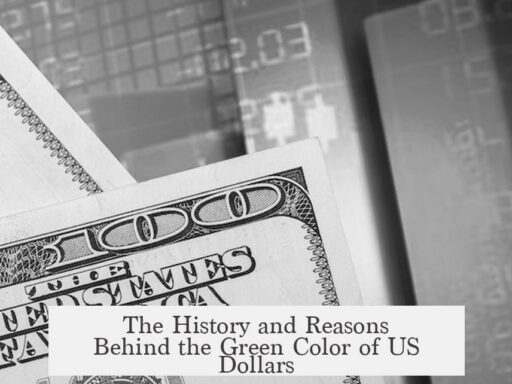Black actors accepted roles in the 1915 film Birth of a Nation despite its racist content largely due to the severe limitations on opportunities for African Americans in the film industry at the time, combined with economic necessity and the minimal, often non-speaking nature of their parts.

The film, directed by D.W. Griffith, is infamous for its white supremacist themes and portrayal of black characters as villains. Most major African American roles were portrayed by white actors in blackface, which reflected the racial prejudice and industry norms of the early 20th century. Black actors appeared mostly as extras or in minor background roles. These roles did not allow them to voice characters or shape narratives.
One key reason black actors accepted these minor roles was the scarcity of opportunities. As Lillian Gish, a lead actress, noted, there were very few black actors available in California, and many film parts for African Americans were customarily played by whites in blackface. Griffith himself claimed he preferred to use his regular company of white actors. This reflects the tight racial control on casting and narrative agency during that era.

Black actors who participated were often relegated to silent, background characters. They remained uncredited and housed separately on set, illustrating racial segregation and exclusion. Payment for black extras was typically low, often $1.10 or $2.00 per day, similar to white extras, though some, like Madame Sul-Te-Wan, earned more ($3 to $5 per day). Madame Sul-Te-Wan is a notable exception among black actors in the film; originally hired as a cleaning woman, she later secured small parts and went on to have a more sustained Hollywood career.
The industry’s racial hostility is evident in Griffith’s approach. He feared giving black characters autonomy on screen, choosing white actors in blackface for major villainous roles to control black representation and reinforce racist stereotypes. Black actors were allowed on screen only in limited, often non-speaking capacities to avoid offending white Southern audience sensibilities. Indeed, some scenes involving black characters played by black actors were censored to prevent upsetting white viewers.

Black actors likely accepted these roles for economic reasons. The entertainment industry offered few alternatives for African Americans to earn income or develop their craft professionally. Despite the degrading nature of the roles and the film’s racist ideology, this participation represented one of the sparse avenues for work and visibility in the segregated entertainment business.
On set, black performers were isolated from their white counterparts. They were housed in separate barracks near the studio and kept at a distance from white extras, many of whom were from the segregated South. Despite this isolation, black actors contributed to the film as extras or bit players without public recognition. Their voices and perspectives remain largely undocumented, as records or statements from these actors addressing their involvement are scarce.

Audience and community reaction were sharply divided. While Birth of a Nation found support among many white viewers, especially in the South, the African American community responded with widespread condemnation. The film triggered organized resistance and became a crucial moment in African American activism. Groups like the NAACP mobilized to protest its racist content and challenge its screening. This backlash highlights that black actors participated within a deeply hostile social context.
Among black actors in the film, Madame Sul-Te-Wan stands out. She reportedly approached Griffith directly and secured small roles, earning higher pay than many other extras. Despite accusations and hostility related to the film, she defended herself legally and continued her career. Her experience underscores the complex negotiations black actors made between opportunity and exploitation.

Many black actors may have accepted roles without publicly criticizing the film, likely because speaking out could have jeopardized fragile careers in a dangerously racist industry. The lack of recorded dissent from participants underlines the limited agency black actors had at the time. They balanced survival, career ambitions, and the risks of engaging with a film that portrayed their race negatively.
| Reasons Black Actors Accepted Roles in Birth of a Nation |
|---|
|
Participation by black actors in Birth of a Nation reflects harsh commercial and social realities for African Americans in the film industry during the 1910s. Despite the film’s overt racism and use of blackface for main black roles, black extras accepted marginal roles. Their experiences reveal systemic discrimination and highlight early struggles for representation and recognition.

- Major black roles were played mostly by white actors in blackface to maintain racist control.
- Black actors appeared mainly in uncredited, non-speaking, minor roles due to industry limits.
- Economic necessity and scarce opportunities drove black actors to accept these small parts.
- On-set segregation and low pay reflected racial inequalities of the era.
- Madame Sul-Te-Wan is a notable black actress who gained pay and small recognition.
- Black community backlash against the film spurred NAACP activism.
In the film Birth of a Nation (1915), there are actual black actors playing roles—why would they accept those roles in the first place?
The simple answer is this: black actors of that era faced extremely limited opportunities. They often took whatever roles were available, despite the problematic portrayal and lack of recognition. Let’s unpack this a bit, because the story behind those appearances is complicated, uncomfortable, and deeply tied to the racial realities of early 20th-century America.

You might be surprised to learn that Birth of a Nation, while infamous for its racist narrative and glorification of the Ku Klux Klan, did include actual black actors—although mostly in minor, non-speaking roles. Most major black characters were played by white actors in blackface. So, why would real black actors sign on to such a film? The reasons slice through social, economic, and industry layers.
Limited Options in the Film Industry
Back in 1915, Hollywood was practically a no-go zone for black actors seeking meaningful roles. As actress Lillian Gish noted, there were “practically no Negro actors in California then” and only a handful in the East. The film industry was dominated by white filmmakers who often refused to hire black actors for serious parts.
Because of this scarcity, most African-American roles—even extras—were typically portrayed by white actors in blackface, especially if those roles were major or villainous. D.W. Griffith, the film’s director, preferred to use his own troupe of white actors instead of hiring black players, particularly to control the depiction of African Americans on screen.
In this environment, black actors faced a stark choice: either take minor, often degrading roles or stay out of the industry altogether.
Economic Necessity and Practical Motivation
This was not just about artistic expression. For many black actors, accepting bit parts or background roles in Birth of a Nation boiled down to economic survival. Actors like Madame Sul-Te-Wan, who became the most prominent black extra in the film, initially worked as a cleaning woman on set before walking up to Griffith and asking for a chance to act.
She was paid $3 to $5 per day, which was higher than most extras. For reference, other black and white extras reportedly earned between $1.10 and $2.00 daily. This income, though meager, allowed some African-American performers to gain a foothold in film, leading a few to continue careers in Hollywood despite the stigma associated with their roles.
Fear and Control Behind the Scenes
The racial dynamics of the film’s making reveal deep fears and control tactics. Griffith’s horror at giving black people “autonomy” on screen meant he deliberately chose white actors in blackface for big villainous parts like Gus or Silas Lynch. It allowed him to maintain narrative control—and, frankly, to perpetuate hateful stereotypes without confronting the presence of real black actors acting independently.
Black actors in the film were confined to sidelines, housed separately near the studio, and cut off from the white extras, who were often from the South and held their own prejudices. This separation extended to recognition: black extras were not credited, nor given speaking parts, reinforcing their marginal status.
Complicated Reception and Consequences
The film’s portrayal inflamed tensions nationwide. The black community mounted fierce opposition. The NAACP famously organized protests and urged bans, marking a key moment in African-American activism. Yet the actors involved rarely made public statements. We might suspect fear of retaliation or limited platforms to voice dissent.
For Madame Sul-Te-Wan, backlash was personal. She was accused of theft and blamed for the criticism of the film. Yet she defended herself with legal help and returned to work for Griffith’s productions, carving out a modest career in Hollywood. Her story proves that even in hostile environments, some black actors navigated paths forward—though at great cost.
Why Did Black Actors Accept These Roles? Let’s Summarize:
- Opportunity scarcity: The film industry shut black actors out of major roles; minor roles—even in controversial films—were rare chances to work.
- Economic reasons: Acting paid better than many other jobs accessible to African Americans at the time.
- Industry context: Minstrel traditions and prevailing segregation limited casting options. The use of blackface for principal black characters exemplified racial control.
- Control & Fear: Griffith’s avoidance of authentic black portrayals meant real actors could only appear in small, non-threatening parts.
- Social pressure and segregation: On-set treatment separated black actors from whites, reflecting the segregated society outside.
- Lack of credit: Even those who performed were invisible in official records.
One may ask: “Did those black actors realize the harm the film caused?” The evidence is thin. Most kept silent, possibly out of fear or resignation. Would you speak out against a powerful director who controlled your paycheck and your chance at future roles, especially in a racist society?
Lessons and Reflections
The inclusion of real black actors in Birth of a Nation represents a complex intersection of exploitation and agency. It’s not a simple story of complicity but a snapshot of survival strategies in an oppressive industry. Actors faced tough choices: reject the only available work or participate in a film that distorted and demeaned their people.
This history reminds us how far the industry has come—though not far enough—in offering black performers meaningful, respectful roles. It also honors the resilience of those early actors who dared to tread onto Silver Screen despite the odds.
Next time you watch a film, consider the invisible stories behind those minor roles. Who took the job? Why? What did it cost them? Birth of a Nation is an uncomfortable but crucial chapter in that larger narrative.




